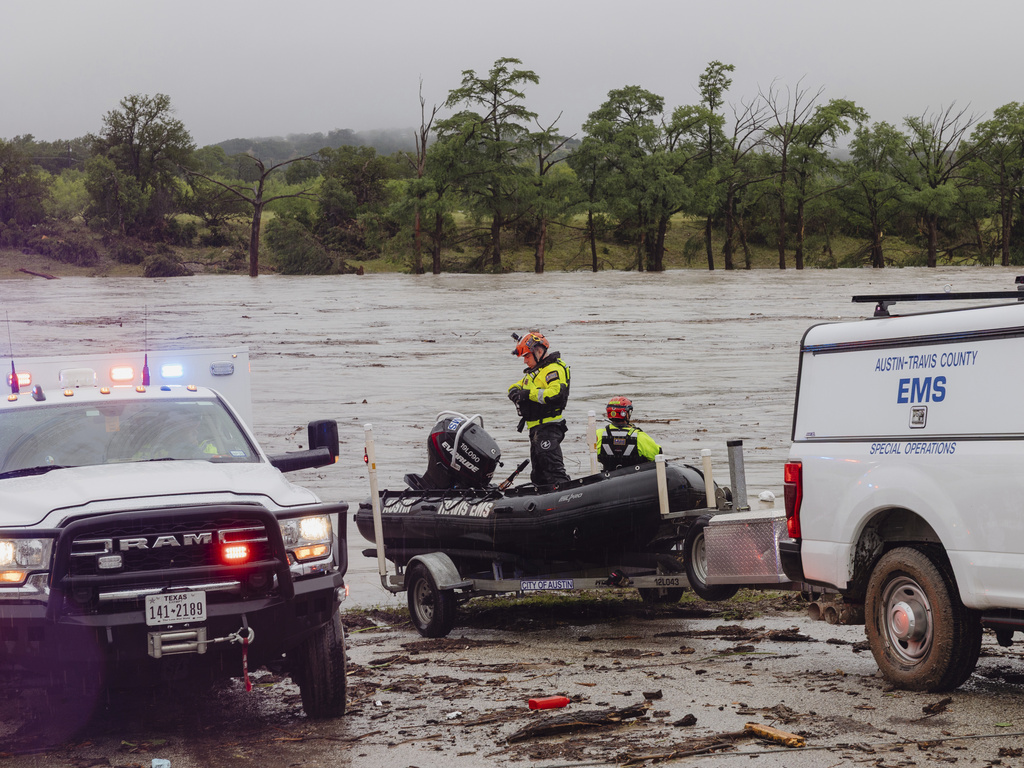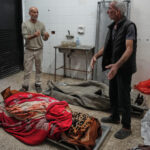Texas Hill Country Flash Flood Kills 24 People \ Newslooks \ Washington DC \ Mary Sidiqi \ Evening Edition \ A catastrophic flash flood in Texas Hill Country has killed at least 24 and left many missing. More than 20 summer camp girls are unaccounted for, with rescue operations underway. Authorities and families plead for answers as helicopters and boats conduct rescues.

Quick Looks
- Location: Texas Hill Country, mainly Kerr County
- Casualties: 24 confirmed dead, dozens still missing
- Rainfall: Over 10 inches overnight; river rose 22 feet in 2 hours
- Summer Camp Impact: Over 20 Camp Mystic attendees missing
- Rescue Efforts: 237 people rescued; 167 by helicopter
- Equipment Used: 14 helicopters, 12 drones, 9 rescue teams
- Emergency Response: 400 personnel involved in operations
- River Data: Guadalupe River gauge failed after 29.5 feet reading
- No Local Alerts: Kerr County lacks emergency warning system
- Emotional Toll: Families clung to trees, attic rescues reported
- Tourism Hit: Area is major river tourism and summer camp hub
Deep Look
In an unprecedented and catastrophic event, torrential rains in Texas Hill Country unleashed a deadly flash flood that claimed at least 24 lives, left dozens missing, and forced hundreds into desperate survival situations. Entire families were displaced, with some residents clinging to trees and rooftops while floodwaters engulfed their homes. The Guadalupe River, usually a tranquil draw for tourists and summer camps, transformed into a violent, fast-moving force that tore through communities like Hunt, Ingram, and Kerrville.
The flooding was triggered by an overnight downpour that dumped more than 10 inches of rain across central Kerr County. River gauges recorded a staggering 22-foot surge in just two hours, overwhelming local infrastructure and leaving little time for emergency response. The National Weather Service later confirmed that the river gauge in Hunt failed after measuring water levels at 29.5 feet—far above flood stage. Bob Fogarty, a meteorologist with the agency’s Austin/San Antonio office, emphasized the sudden nature of the disaster, noting that “the water’s moving so fast, you’re not going to recognize how bad it is until it’s on top of you.”
The timing of the storm—during the early hours of Friday morning—added to the danger. Many residents were asleep and caught off guard, with no emergency alert issued via mobile phones in Kerr County. Judge Rob Kelly, the county’s chief elected official, acknowledged the lack of an official warning system, saying, “We do not have a warning system.” He added that despite flood watches being upgraded to warnings, “no one knew this kind of flood was coming.”
Among the most harrowing concerns was the safety of children attending Camp Mystic, a popular summer camp in the area. Of the roughly 750 campers, 23 girls remained unaccounted for as of Friday evening. Emotional scenes unfolded at a reunification center in Ingram, where families anxiously awaited word on their loved ones. One young girl, still wearing her “Camp Mystic” T-shirt, was seen sobbing in her mother’s arms, standing barefoot in a puddle.
State emergency official Patrick confirmed that at least 237 people had been rescued, with 167 airlifted by helicopters. Some were pulled from trees or the roofs of submerged homes. The massive rescue operation involved 14 helicopters, 12 drones, nine rescue teams, and more than 400 emergency personnel. “Search crews are doing whatever we can to find everyone we can,” Patrick said.
Personal stories painted a grim picture of the flood’s speed and violence. Erin Burgess of Ingram described waking to rain and thunder at 3:30 a.m. Just 20 minutes later, floodwaters surged into her home. She and her 19-year-old son floated to a tree and clung to it for nearly an hour until they could escape to higher ground. “Thankfully he’s over 6 feet tall. That’s the only thing that saved me,” she said.
In Kerrville, Barry Adelman shared how he and his family, including his 94-year-old grandmother and 9-year-old grandson, were forced into their attic as floodwaters rapidly rose through the three-story home. “I was horrified,” he said. “I was having to look at my grandson in the face and tell him everything was going to be OK, but inside I was scared to death.”
Matthew Stone, another Kerrville resident, said there was no warning on his phone. “We got no emergency alert. There was nothing,” he said. “Then, a pitch black wall of death.” He helped rescue neighbors using his paddle boat and described hearing faint cries for help from the darkness, though no one could be found.
The National Weather Service had forecast rain with the potential for flooding, but the scale of the storm exceeded expectations. Fogarty explained that the region’s terrain made it especially vulnerable. Known as “flash flood alley,” the Hill Country’s rocky surface and shallow soil cause water to flow quickly rather than absorb into the ground. Austin Dickson, CEO of the Community Foundation of the Texas Hill Country, explained, “When it rains, water doesn’t soak into the soil—it rushes down the hill.”
This topography, combined with outdated or absent emergency infrastructure, contributed to the disaster’s severity. The Guadalupe River, a vital part of the local economy due to its popularity among tourists and summer camps, turned deadly in just a few hours. Century-old river camps, rental cabins, and vacation homes between Ingram and Hunt were battered by the floodwaters.
The economic impact is expected to be significant. Summer camps like Camp Mystic bring families from across the U.S. and fuel local business. Now, those same locations are damaged, shuttered, or unreachable. Dickson noted, “It’s generally a very tranquil river with really beautiful clear blue water that people have been attracted to for generations.”
The flood has now prompted calls for better warning systems, stronger infrastructure, and improved forecasting technologies. Judge Kelly emphasized that while floods are common in the region, this was beyond any historical precedent. “We have floods all the time,” he said. “This is the most dangerous river valley in the United States.”
In the wake of the disaster, nonprofit organizations and community foundations have launched donation efforts to support displaced families, fund emergency operations, and assist in rebuilding. The Community Foundation of the Texas Hill Country is leading one such initiative, directing resources toward nonprofits on the ground.
As rescue operations continue and the community begins to assess the long-term damage, the disaster stands as a stark reminder of nature’s unpredictability—and the urgent need for proactive disaster planning, especially in vulnerable areas like the Hill Country.







